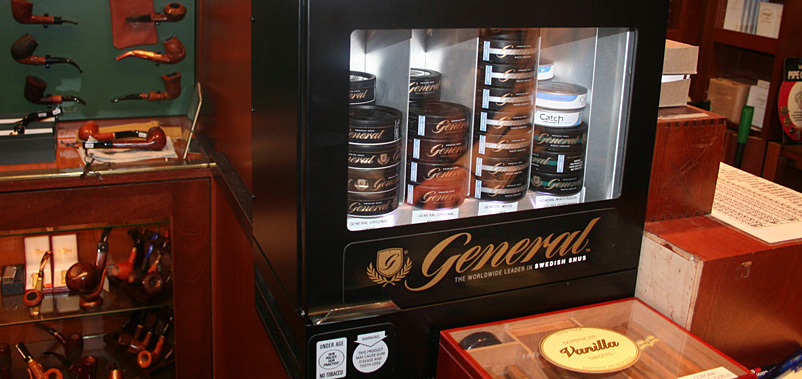Snus on 60 minutes.
Swedish Match and fans of snus tobacco were thrilled to hear on the TV program "60 Minutes" that snus wasn't so bad, in fact, could be good for smokers.
-
 Snus prepared the Swedish way, delivered from Sweden has become a more common sight at U.S. tobacconists.
Snus prepared the Swedish way, delivered from Sweden has become a more common sight at U.S. tobacconists. -
-
Snus on 60 minutes.
Swedish Match and fans of snus tobacco were thrilled to hear on the TV program "60 Minutes" that snus wasn't so bad, in fact, could be good for smokers. Millions of TV viewers watching "60 Minutes" on TV last week heard commentators declare that smokeless tobacco - the contemporary nomenclature for Swedish snus oral tobacco - may help to quit smoking cigarettes and is less harmful. Outlawed by the EU except in Sweden, Swedish snus, which is in loose form or small bags that are tucked under one's upper lip, is gaining customers in the US as "no smoking" laws saturate the nation. While smoking has been cut in half in America in the last four decades, cigarette sales are plunging, and tobacco giants R. J. Reynolds and Philip Morris have joined the oldest current maker, Swedish Match, with brands of smokeless tobacco. According to a report in the Swedish Wire, although the news show aimed to investigate both the pros and cons, the core message in the report was that smokeless tobacco may help you to quit smoking cigarettes and that it’s less harmful.
“Snus is well-known in Sweden and awareness in the US of snus as a spit free product has grown quite a lot over the past two years, though it is still relatively unknown by many. We would expect the snus market in the US to grow with increased awareness of the category," Swedish Match spokesperson Rupini Bergström told the Internet news site. -
 Nowadays, one in five snus users in Sweden is a woman. The higher acceptance of snus in Sweden has been driven in part by changing social mores and the knowledge of health risks associated with smoking tobacco.
Nowadays, one in five snus users in Sweden is a woman. The higher acceptance of snus in Sweden has been driven in part by changing social mores and the knowledge of health risks associated with smoking tobacco. -
-
The 'Return' of Swedish Snus
During the years of mass Swedish immigration, the main streets in the Swedish sections of cities such as Chicago, New York or Minneapolis were often nicknamed “Snus Boulevard” (pronounced “snoose”) for the Swedes’ habitual use of the product. Snus, that is—more commonly known in this country as chewing tobacco, or snuff. Up until “Snus King” J.F. Ljunglöf invented metallic foil packaging for his products, Swedish immigrants had to make do with less popular, locally produced varieties. By the late 1800s, though, Ljunglöf (who with friend and scientist Jöns Jacob Berzelius also developed the modern technique of producing snuff that is placed under the lip, rather than taken through the nose) was delivering his “Ettan” brand to the U.S. (It was also reportedly the brand of choice for the Pope Leo XIII in the Vatican.) Prior to WWI and the creation of the government tobacco monopoly, the Ljunglöf family was the wealthiest in Sweden, counting Ivar Kreuger, the first Wallenberg and many other celebrities of the time, as well as the royal family, among their friends. Ettan was the number two brand in the world and the foundation for the family’s wealth. The monopoly was abolished in 1967, and the Swedish Match factories represent what is left of the former snus empire.
These days Swedish snus can be found in America again. Swedish Match is delivering Swedish made snus of the brand General to stores all over the U.S. -
-
